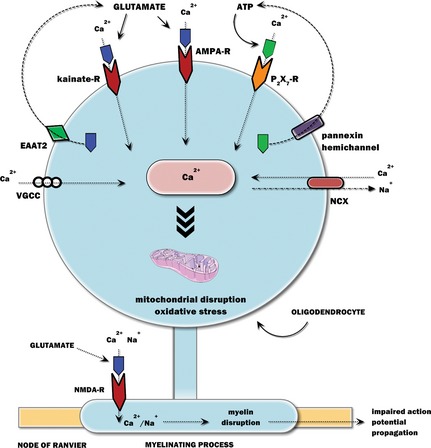Figure 2.

The major pathways governing neurotransmitter‐mediated oligodendrocyte death in hypoxia–ischemia (HI). The glutamate surge that occurs during HI leads to the overactivation of AMPA/kainate receptors on oligodendrocyte somata and NMDA receptors on myelinating processes. ATP is also released in HI, partly from the oligodendrocyte itself via pannexin hemichannels, leading to the overactivation of purinergic P2X7 receptors and enhanced Ca2+ signaling. The Ca2+ surge leads to the activation of voltage‐gated calcium channels (VGCC) and reversal of Na+/Ca2+ exchanger (NCX), further increasing the intracellular Ca2+. The glutamate transporter EAAT2 also starts to operate in reverse, contributing to the surge in extracellular glutamate. The excess cytosolic Ca2+ is sequestered in mitochondria where it leads to mitochondrial disruption and oxidative stress and eventual death to oligodendrocytes.
